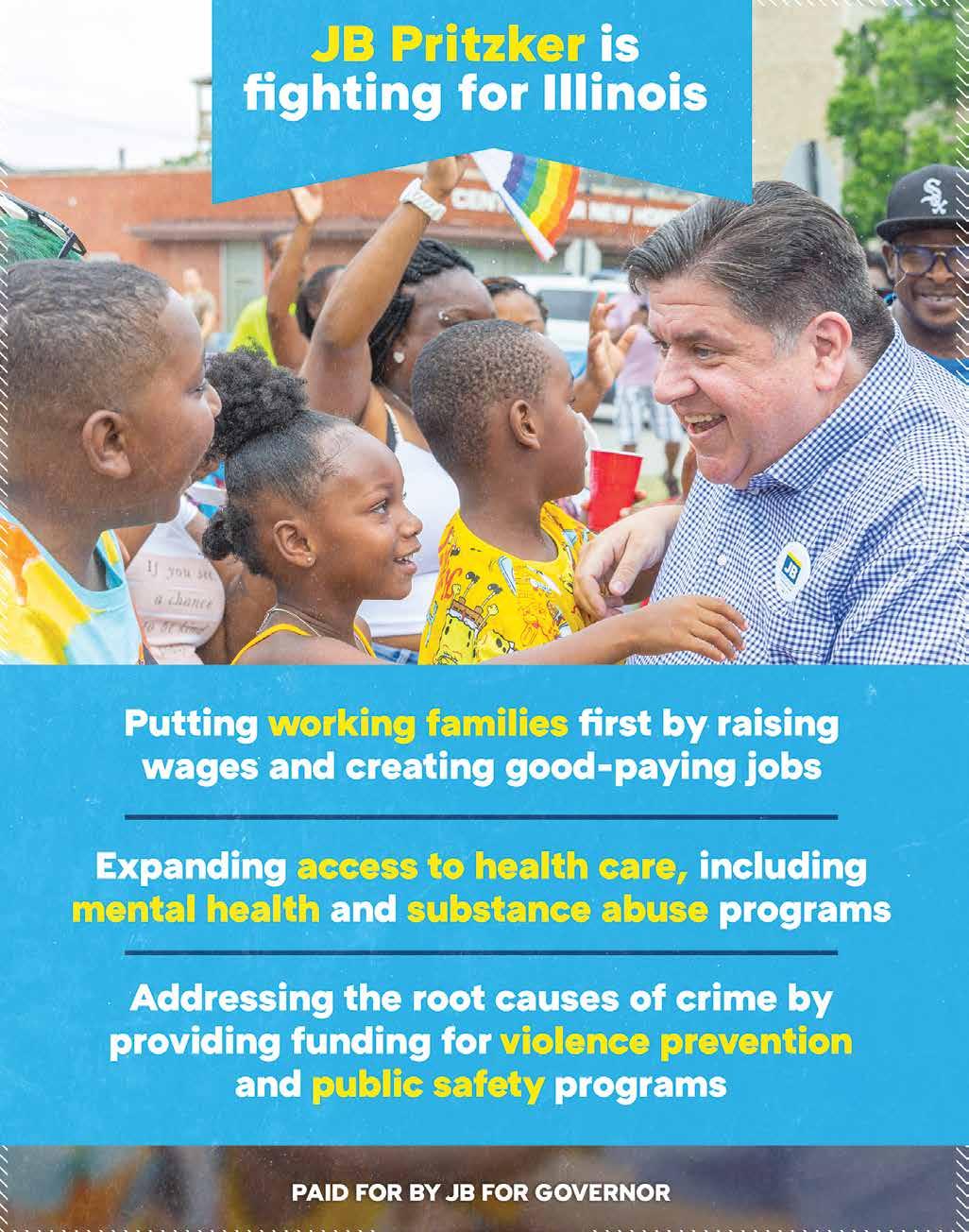

E notes
Just Sayin
RACISM
Real Talk
—we all know that if President Barack Obama had taken any government documents classified or otherwise that were the property of the US Government that he would have been handcuffed and jailed. So whatsup with the Trump situation? Caught red-handed and unapologetic, foolish as ever, making his usual ignorant statements like, “I declassified the documents,” as if that changes the information. It doesn’t.s Listen people, what was classified was based on the informa tion and the timing. If the situation changes, shifting the urgen cy of planning and execution of the plan does not devalue the significance of the information the documents contain.
WHITE MALE PRIVILEDGE
But Trump, who can’t think pass his own self-importance, be ing the narcissist that he is when speaking on Fox News,’ “Han nity,” declined to point to specific evidence of that declassifica tion. But, in a pre-recorded interview, he told host Sean Hannity that evidence was not needed.
“There doesn’t have to be a process, as I understand it,” Trump said. “You’re the president of the United States, you can declas sify just by saying it’s declassified, even by thinking about it.”
Pressed further, Trump insisted he had declassified the docu ments in question when he left the White House, again without pointing to proof of such.
“In other words, when I left the White House, they were de classified,” Trump said.
DISTORTED LEGALS GROUNDS
Quite frankly, the real fact here is not whether they were classified or not. They did not belong to him. They were/are the property of the United States. If we were dealing with the documents of a high corporate entity Trump would have been indicted for theft and . So many things are wrong with the handling of this matter. All this tip toeing around his wrong-do ing and those who follow him is unacceptable and disrespectful to the entire United States constituency who participate in the voting process.
Why are we accommodating a man who attempted to destroy America as the democratic country we know? He and his foolish minions–all would-be monarchs have shown their hand. They wanted to destroy ‘America the Beautiful’ and transform it into Donald Trump’s America where he held all the power.
POWER TO THE PEOPLE
People, we are, as is the entire world, in a state of chaos. Fact.
With that, the physicality of the world is at stake. The mental, emotional, and physical wellbeing of all human beings are frag ile at best.

Only ‘we the people’ can protect our interests. Do not wait on a savior or Politician. It’s not going to happen. We put politi cians into office. We’re their boss and if they don’t deliver, what we want, let’s fire them. Real Talk. Get rid of all these sorry political self- aggrandizing hype men and women by not sending them back to abuse you by not representing your interests. We are the Real Power, yet we give it up rather than accepting responsibility for our present and future. As a ‘Baby Boomer” I feel comfortable saying that we leaned into our vision and cre ated the world we live in with all our successes and failures. We accept full responsibility for what is, but going forward, young people, it’s your time now.
You’ve got to accept responsibility as architects of your future. If you want, better political leadership, take action now. Women, if you want power over your body, fight now and win; People if you want to end white male privilege, then do what you must now to destroy it forever and establish equity across the board for all people.

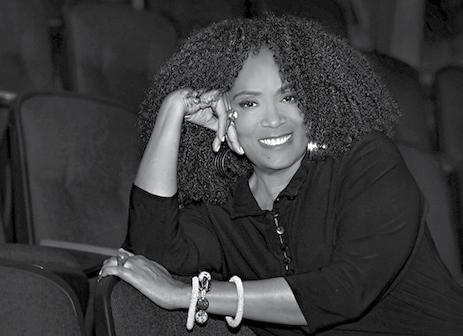
We cannot afford another Donald Trump in any position. And imagine what if he had been brilliant or even smart? The good news is he isn’t and so his veil has been removed.
He is the Emperor with no clothes and all his followers/sup porters with him. We got lucky. But the next would-be “King” could very well be a mastermind and like Hitler, he could pull off a coup.
If January 6, 2021 taught us anything, let it be that we are not impenetrable.s
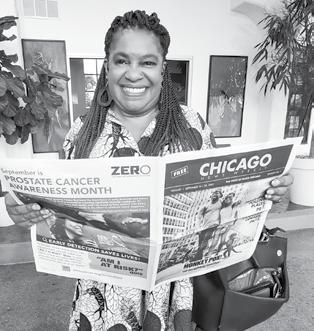
Business Empowerment 30 Great Ways to Market to Professionals and Other Businesses
Let’s talk about how to turn prospects into customers and retain them for future marketing to. While, your marketing is doing its job, you need to be working on turning those prospects into customers. There are a few key ways to draw them in and seal the deal.
You need to be:
The biggest fear of most prospects or new custom ers is the dread buyer’s remorse. You want to avoid this at all costs and this should be mitigated if you’ve provided a quality product/service that delivers on the marketing claims you’ve made.
However, this can still occur. There are two ways to deal with this:
These offers alone will also mitigate buyer’s re morse because the customer will trust you more, just for offering these things.
There are number of other ways to turn a prospect into a customer:
1. Offer prospects a special price as an opportunity for you to test the market.
2. Offer prospects a lower price with the reason of
pushing inventory to pay a tax bill, for your kid’s’ braces, or another tangible reason. Customers love that this makes you feel so much more human.
3. Offer prospects a referral incentive.
4. Offer prospects a smaller, more inexpensive prod uct first to build trust.
5. Offer prospects package deals.
6. Offer prospects to charge less for their first pur chase if they become a repeat customer.
7. Offer prospects extra incentives-longer warran ties, free bonuses if ordered by a set date.
8. Offer prospects financing options, if applicable.
9. Offer prospects a bonus if they pay in full.
10. Offer prospects special packaging or delivery.

11. Offer prospects “name your own price” incen tives.
12. Offer prospects comparative data or other com parison tools.
13. Offer prospects a trade-up or upgrade to some thing they already have.
14. Offer prospects additional, educational informa tion to help them make the decision.
The options really are as limitless as you make it.
You can use these or other ideas to find what works the best for your business, products/service and target market.
Dr. Sakira says...
“By making it value-driven, customer- focused, informative, educational, problem solving, and fun to do business with you, you’ll elevate and validate your company in the mind of your customers ”
Dr. Sakira Jackson is a CEO Consultant, Business Psychologist|, CEO Coach| Business Coach and Ac celerator and Keynote Speaker. She is the founder of Brainpower Consulting and the Intentional CEO Secrets Masterclass. You can reach Dr. Jackson by email, sakira@drsakira.com
STUDENT LOAN UPDATE
It’s Almost Time to Apply for the One-Time Student Loan Debt Relief Plan CNW Report
On Aug. 24, 2022, the Biden-Harris Administration announced a Stu dent Debt Relief Plan that includes one-time student loan debt relief targeted to low- and middle-income families.
The U.S. Department of Education (ED) will provide up to $20,000 in debt relief to Federal Pell Grant recipients and up to $10,000 in debt relief to nonPell Grant recipients. Borrowers with loans held by ED are eligible for this relief if their individual income is less than $125,000 (or $250,000 for households).
What Do I NeeD to KNoW?
An online form will be available in October 2022. Here are some steps you can take now and in the future.
Step 1: CheCK If you’re elIgIble
You’re eligible for student loan debt relief if your annual federal income was be low $125,000 (individual or married, filing separately) or $250,000 (married, filing jointly or head of household) in 2020 or 2021.

• $20,000 in debt relief: If you received a Pell Grant in college and meet the in come threshold, you’ll be eligible for up to $20,000 in debt relief.
• $10,000 in debt relief: If you did not receive a Pell Grant in college and meet the income threshold, you’ll be eligible for up to $10,000 in debt relief.
Step 2: prepare
Here’s what you can do to get ready and to make sure you get our updates:
• Log in to your account on StudentAid.gov and make sure your contact info is up to date. We’ll send you updates by both email and text message, so make sure to sign up to receive text alerts. If it’s been a while since you’ve logged in, or you can’t remember if you have an account username and password (FSA ID), we offer tips to help you access your account.
• If you don’t have a StudentAid.gov account (FSA ID), you should create an account to help you manage your loans.
• Make sure your loan servicer has your most current contact informa tion so they can reach you. If you don’t know who your servicer is, you can log in and see your servicer (s) in your ac count dashboard.
• To be notified when the process has officially opened, sign up at the Depart ment of Education subscription page, www.ed.gov/subscriptions
Step 3: Submit your application (when available)
The application will be available online in October 2022.
By signing up on the subscription page, the Department of Education will share updates on their page and send you an email when the application is available. You’ll have until Dec. 31, 2023, to submit your application.
Dollars and sense
ClOsing tHe gApHope for New Home Buy
COming sOOn tO CHiCAgO is a mortgage program specifically for African Amer ican homebuyers. The Closing the Gap Special Purpose Credit Program (SPCP), was created by Legacy Home Loans, the largest Black-led mortgage banking firm in the United States. Headquartered in Las Vegas, Legacy Home Loans seeks to close the gap that currently exists in African American homeownership. This pro gram has been designed specifically by African American Mortgage professionals to meet the needs of African American borrowers. President and CEO of Legacy Home Loans, Ben Slayton, states “no one knows our people like we do”. Ben Slayton, the founder and CEO of Legacy Home Loans, is a 55 year mortgage industry veteran. Slayton was the first African American owner/broker of a Century One franchise in 1968. He is someone who has know and seen the discrimination and lack of access evident in the mortgage industry. The goal of the Special Purpose Credit Program is to fund 1 Billion in mortgage and mortgage assistance to African American homebuyers by the end of 2023 and to continue the 1 Billion in investments every year following.
The program will offer borrowers a one percent down payment option, free property appraisal, free warranty, free pre-purchase counseling, as sistance with closing costs and a minimum credit score requirement of 620. Unlike most conven tional mortgage programs where the minimum credit score is 640 or higher and more than one percent is required for down payment, this program can be a great way for more African Americans to enter the club of homeownership. The Legacy Home Loan program is scheduled to be piloted in Atlanta, Baltimore, Chicago, Detroit, Memphis and Philadelphia starting in October 2022.
According to the United States Census Bureau at year end 2020, 74.5% of whites in owned their homes while only 44.1% of African Americans were homeowners. Unfortunately, it appears that this gap is growing. The rates of African American homeownership is the lowest of all racial groups in the country. According to Stacker.com, the African American homeowner ship gap in Chicago is 32.4%, while the national
Sharice Bradford Staff Writerhomeownership rate is 39.8%. The National white homeownership rate is 72.7%. Fifty-four years after the passage of the Fair Housing Act, which prohibited discrimination in home sales based on race, there are still significant barriers in place that are keeping African Americans from realizing homeownership.
According to Lisa Rice, President and CEO of the National Fair Housing Alliance, “housing policy must specifically cater to African Amer icans because racial segregation is the bedrock of all inequality in America.” Unfortunately, we still see the effects of redlining, stolen properties and other factors that have negatively impacted the ability of African Americans to reach the goal of homeownership. Another issue affecting African Americans ability to attain homeowner ship is that many African Americans live in credit deserts. Credit deserts are areas that have limited access to mainstream credit and in many cases limited access to neighborhood financial insti tutions. This results in is low or no credit scores for individuals that live in this credit deserts.
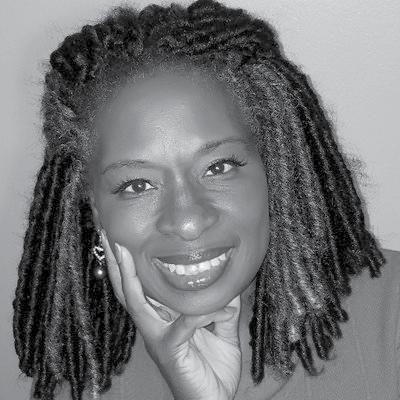
While other banks and institutions that work to assist individuals with homeownership are devel oping new programs, Bank of America and their zero down payment mortgages and Wells Fargo 1 billion commitment over 6 years to support housing stability as well as racial and economic equity, none of these programs are ONLY for African Americans. Legacy Home Loans with their SPCP program may be just the programs African American need to mitigate the barriers that have seemingly always existed for African Americans seeking homeownership.
There are programs and financial institutions in the Chicagoland area that assist individuals who are attempting to reach the goal of homeown ership. Neighborhood Housing Services (NHS) offers pre-purchase counseling and loans for homebuyers. Habitat for Humanity has a Home buyer University that assists individuals seeking to become homeowners. The Illinois Housing Development Agency (IHDA) also has programs that assist with down payment assistance and securing a mortgage. Again these programs are not only geared toward African American buyers and still have guidelines that are more restrictive that the Legacy Home Loans Closing the Gap
The Jackie Jackson Story: Sweet Dreams Are Made of This
Ken Hare Staff WriterM

uch has been written about Jackie Jack son’s success as a Black female entrepre neur. Little is known, however, about her mercurial path to success and her early struggles. The Kilwin’s and soon-to-be new franchisee opens up and shares pre viously undisclosed details with Chicago News Weekly about her childhood and young adult life.




A West Side Chicago native, Jackson was the youngest of seven siblings and lived in Rockwell Gardens, an East Garfield Park public housing project. Her parents, David Moore and Jessie Pearl Moore divorced when she was six years old. With the four oldest siblings away in college, “My mother packed her bags … and moved to the south side of Chicago.”
They stayed with her late aunt, Helen Griffin. She lived in a 4B/2B, two-story brick house near the corner of 88th and Bishop: in the Brainerd neighborhood next door to the Beverly Hills com munity. “In that house, there had to be about ten to twelve chil dren there. My aunt took in foster care children,” she shared. “It was fun, close-knit. It was like a clan because we all went to the same grammar school.” After six months, they moved to 8955 S. Ada because her mother wanted a home just for her and her three young children. Jackson says her mother was a strong, independent woman who expected no handouts from her father: “So I grew up on the free lunch program.”
At Fort Dearborn Elementary School, Jackson had an encouraging 8th-grade teacher - now Dr. Willie Mack - who recognized her “leadership qualities.” “She had a great personality. She was awake,” he said in a phone interview.
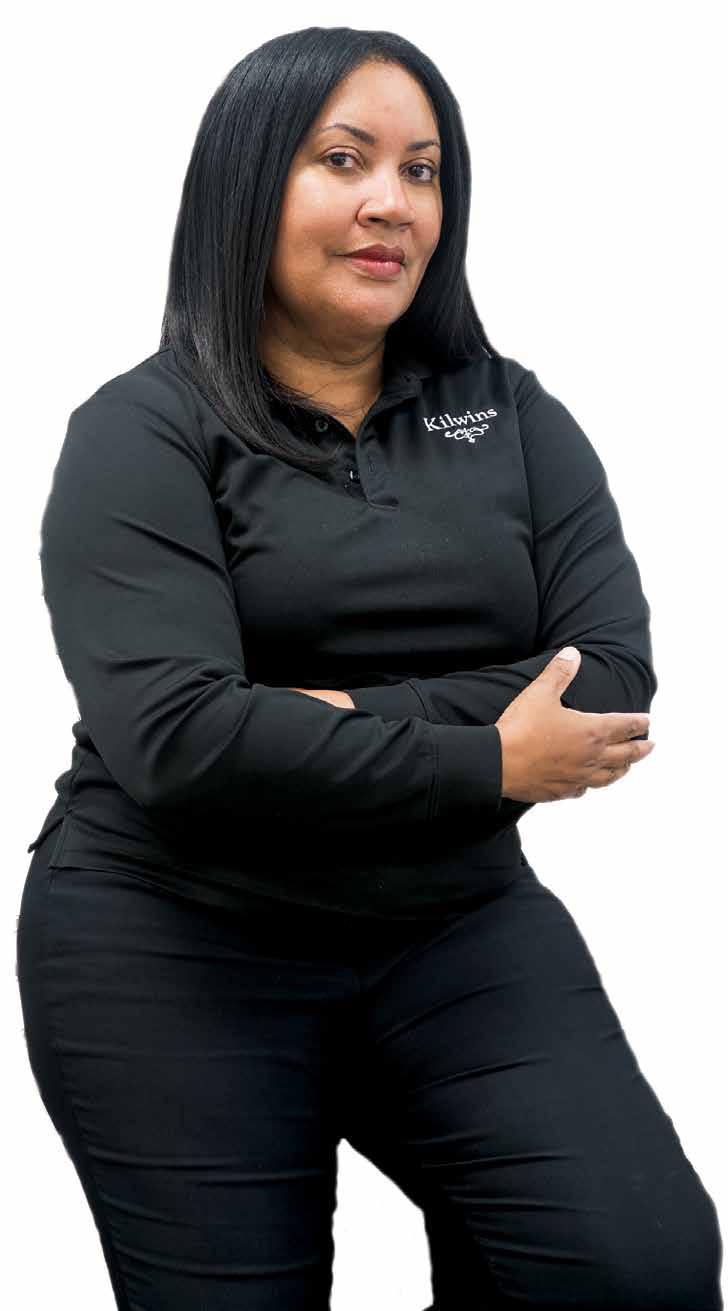
Jackson wanted to run for class president but “chickened out” after realizing she would be running against a more popular and pretty classmate. She recalls Mack pulling her to the side: “Why don’t you want to run for class office? You don’t believe in yourself? I believe in you. I think if you run, you could win.’ And that’s exactly what I did. I ran for that office, and I won.”
In front of her 8th-grade peers, Jackson gave a rhythmic speech written in part by her sisters that began like this: “I’m sure you heard of me before; yes, my name is Jackie Moore. President is what I’d like to be, and it’s up to you to vote for me. I don’t mean to bore you in any way, so listen up to what I have to say.” The entire class erupted into cheers, with kids standing on their desks and chairs shouting, “Yes! Yes!” Thanks to the encouragement and persistence of Dr. Mack, Jackson experienced a rush of confidence unlike anything else.
After graduation, Jackson couldn’t wait to get her first job. She applied for a work permit at thirteen and started work ing at Burger King. “At that time, there were no fast food restaurants anywhere near my neighborhood, so to eat a burger was like Christmas,” the entrepreneur declares.

Jackson said she walked two miles back and forth to work, and surprisingly, the paycheck was not her in spiration. “It was the free meals that always motivated me to come to work and give it my all. To this day,
Book Bans Are an Attack on the Freedom to Read, Teach and Learn
Ben Jealous Guest Columnist NNPA Guest Columnist







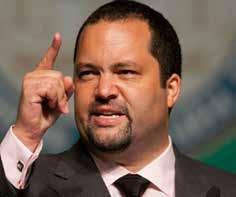
Truth is a threat to authoritarianism. Read ing is a path to truth. That’s why the free dom to read is essential to the freedom to learn. And that’s why the freedom to learn is often attacked by those who abuse pow er and those who cling to it.

Every year, the American Library Association and partner organizations observe Banned Books Week to highlight and push back against these threats. This year’s Banned Books
State legislators and gov ernors are making it illegal to teach honestly about the history and reality of racism in our country. Farright activists are trying to purge schools and libraries of books that feature Black people, LGBTQ people, and others they deem un worthy of students’ atten tion.

The MAGA movement’s attacks on teaching about racism and sexuality have led to what the American Library Association’s Office of Intellectual Freedom has called an “astronomical” increase in challenges to books.
TRUTH IS A THREAT TO AUTHORITARISM
But far-right activists tell parents that words like “equity” are code for Marxism and some thing they should fight. Trump Republicans are encouraging MAGA activists to take over their school boards by running propaganda cam paigns about “critical race theory.”
Trumpish state legislators are introducing laws to make it illegal to teach anything that might make white students experience “discomfort.”
That’s why the annual celebration of the freedom to read that is Banned Books Week is especially meaningful this year.
In addition to the librarians, authors, booksellers, teachers, and other anti-censorship activists who lead Banned Book Week activities, all of us have a role to play in ensuring the voices of our communities are not silenced.
One Texas lawmaker demanded information from schools on 850 books he thought were suspect; his list included works on history and human rights. In Virginia, Gov. Glenn Youn gkin set up an email hotline for people to report teachers suspected of “divisive” practices. Books targeted in the current war on truth in clude a memoir by Ruby Bridges, which tells the true story about her walks through angry mobs when she was a six-year-old who became the first Black stu dent to attend a New Orleans elementary school that had previously been off-limits to non-white students. This is an important part of our history. We cannot build a future together if we are not willing to honestly face the truth about our past and our present.
Banned Books Week is a good time to commit ourselves to defending the freedom to read, teach, and learn about our history — and to opposing those who want to make it illegal
City News
Chicago Uban League’s W.O.K.E. Summit

Sharice Bradford Staff writer
The Chicago Urban League is continuing the commitment to building entrepreneurship in the Black community. This year the W.O.K.E (Wealth, Opportunity, Knowledge, Education) Summit served as a reminder of the commit ment the organization made to Chicago since its inception in 1916. The mission and vision of the Urban League is to help individuals find employment, secure affordable housing, assist with access to higher education and build and grow businesses. As one of the first affiliates of the National Urban League, the Chicago Urban League was incorporated in 1917 and has been an important part of the lives of African Americans in Chicago.
The Center for Entrepreneurship and Innovation, as sists entrepreneurs with launching, growing and sustain ing their businesses. The current entrepreneurship center is comprised of coaches, volunteer subject matter experts and organizations that not only provide counseling for business owners but mentorship as well. Not only does the Center for Entrepreneurship provide training, there are opportunities to work one-on-one with coaches and of course programming such as the W.O.K.E. Summit. Director of the Center for Entrepreneurship and Inno vation, Kelly Evans, said the following about the Summit in the Summit program booklet, “Whether you are here to get inspired to launch a new venture or grow and scale an existing one, you are in the right place! Today we focus on attaining Wealth, expanding Opportunities, gaining Knowl edge and honing our Expertise; and we at the Chicago Urban League Center for Entrepreneurship and Innovation – along with all of our corporate partners and community stakeholders – are here for it!”
Those corporate partners included US Bank, Molson Co ors and Verizon. Community partners included the Small
Applications for $10,000 Grants to Open on October 3
COOK County Launches Source Grow Grant CNW Report
Cook County Announces $71 Million Source Grow Grant Program to Help Historically Excluded Small Businesses in Pandemic Recovery
CHICAGO—The Cook County Bureau of Eco nomic Development announced the launch of the Source Grow Grant through the Cook County Small Business Source, a program that strives to support, grow and elevate small businesses as the backbone of Cook County’s economy. The Source Grow Grant program will award $71 million in grants to thousands of small businesses begin ning in 2022. Applications will open on October 3.
The Source Grow Grant is made possible through funds provided by the American Rescue Plan Act.
The Source Grow Grant program will provide $10,000 in grants paired with one-on-one business advising to historically excluded businesses—in cluding those owned by entrepreneurs of color, women, veterans, LGBQT+ and persons with a disability—to close racial wealth and opportunity gaps. The grants will prioritize businesses in sectors heavily impacted by COVID-19, including Accommodations, Hospitality, & Food Service, Arts & Entertainment, Childcare & Social Assis tance, Retail Trade, and Transportation & Warehousing “Cook County’s small businesses faced unprecedented challenges during the pandemic, and the Source Grow Grant program is key to helping them scale and thrive,” said Cook County Board President Toni Preckwinkle. “I’m proud that this program will provide not only the funds they need, but also the business coaching that is critical to sustainable growth.”

The Cook County Small Business Source provides coaching and guidance which provides oneon-one business advising through the organization’s support network of 40+ organizations, we binars and small business resources in areas such as finance and marketing, and grant application support.
“I am grateful that $1 million of The Source Grow Grant has been allocated to assist veter an-owned small businesses,” said Cook County Chief Administrative Officer Tanya Anthony. “This funding is crucial to helping veterans retain and grow their business. Empowering our veterans and offering support is key to creating a better Cook County for everyone.”
The Cook County Small Business Source engages some of the region’s leading business support organizations such as Allies for Community Business, Berwyn Development Corporation, Chi cago Minority Supplier Development Council, Chicago TREND, Chicago Urban League, Illinois Hispanic Chamber of Commerce, Illinois Restaurant Association, The Joseph Center, Southland Development Authority and Women’s Business Development Center to serve as trusted business advisors.
To apply for a Source Grow Grant or learn more about upcoming webinars and help sessions, visit www.CookCountySmallBiz.org/GrowGrant.
Business Administration, State and City agencies and local entrepreneurs. Workshops were presented on topics such as Contracting in Illinois, Black Techcellence, Cannabis Biz Development just to name a few. Summit participants were also treated to music provided by DJ Double Mz and the opportunity to purchase vendors showcase throughout the event space.
Small business represented during the event were mostly graduates on the Center for Entrepreneurship and many of the small business owners served as vendors during the Summit. The Center for Entrepreneurship is an incubator for those small business owners who are ready to learn how to navigate the business world and those who are interested in giving back. Some of the Center for Entrepreneurship graduates are now instructors in the program. What an impactful way to give back and serve as encouragement for those who are working toward earning and growing successful businesses.
For more information on the Center for Entrepreneur ship and to find out about the next cohort of classes visit: https://chiul.org
100 Black Men of Chicago, Incorporated Hosts 20th Annual College Scholarship Fair
Free Registration, over 200 Colleges and Universities across the U.S interact with Students and Parents
CNW Report
The 100 Black Men of Chicago, Inc. (100 BMC) host their 20th Annu al College Scholarship Fair (CSF) on Saturday, October 15, 2022 from 9:00am to 2:00pm at the UIC Forum, 725 W. Roosevelt Road., Chicago, IL 60608.
Registration is free and open to all high school students; juniors and seniors are strongly encouraged to bring their high school transcripts, college entrance exam scores, letters of recommendation, personal essays and resumes. Students and Parents must register online: www.100bmc. org.
The 100 BMC CSF has become the premier event of its kind in the Midwest, attracting over 200 colleges and universities and attended by approximately 4,000 students, parents, teachers and partners in educa tion. Students come from Chicago, and surrounding suburbs, downstate Illinois, Michigan, Wisconsin, Indiana, Ohio, Missouri, and as far as Florida.
Over the previous nineteen years that the 100 BMC has hosted the CSF, the event has helped enable participating colleges and universities to provide millions of dollars in scholarships and grants, and thousands of college acceptances to attending high school students. Parents, teach ers, and other stakeholders in the lives of students are also invited and encouraged to participate.
Since its inception in 1994, the 100 Black Men of Chicago, Inc. (100 BMC), a not-for-profit organization, has taken on the mission to help im prove the quality of life and enhance educational opportunities for young students throughout the Greater Chicago area. Their mission is achieved through mentoring programs which focus on their “Four for the Future” community outreach initiative which comprise mentoring, edu cation, health and wellness, and eco nomic development.
Mayor Lightfoot
Challenges City to “be bold with her” Unveils her 2023 Budget Recommendations to City Council, Proposes Contin ued Investment in Key Areas
By CNW News DeskOn Monday
Mayor Lori E. Lightfoot presented the City Council with her 2023 Budget Recommendations. The recommenda tions align with her stated commitment to strengthening the City of Chicago’s finances through continued fiscal responsibility, while maintaining invest ments in violence prevention, poverty reduction, and wellness.
“Chicago’s 2023 ‘Stability Budget’ allows us to fulfill an important obliga tion we have to our residents and fu ture generations: to seize this once-in-a-lifetime opportunity to transform our city for the better,” said Mayor Lightfoot. “We will develop Chicago into a safer, stronger and more economically resilient city while continuing to deliver best-inclass public services to our residents.”
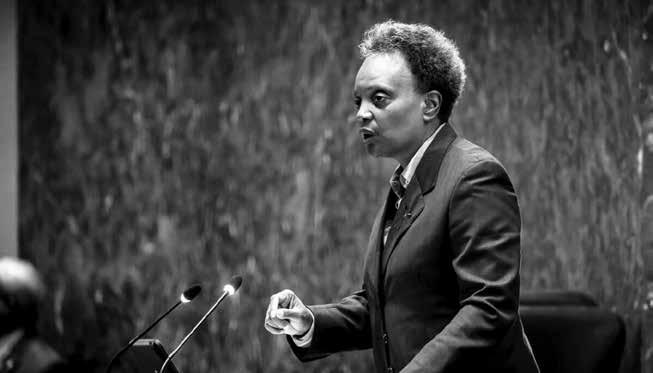
The Mayor, addressing the City Council, discussed what she sees as the largest task to tackle in 2023 stating: “Neglect is not only morally wrong. It is also fiscally foolish. ... We have all been carrying a heavy burden for our decades of neglect, whether we acknowledge it or not. It shows up in the billions that we have spent on policing and incarceration. ... It shows up in the trauma that shrouds too many of our homes and neighborhoods,” Lightfoot told the council. “What I have asked this body to do over three prior years and now again today ... is to be bold with me. To continue to right historic wrongs so that all our residents who call this beloved city home, will benefit and be able to fulfill their God-given potential.”
The Mayor’s ‘Stability Budget’ combines what the administration calls a bold vision for Chicago’s future with fiscal responsibility. The hard work that began three years ago with the FY2019 budget has enabled the City to set a course for financial stability, despite the economic fallout of the pandemic. As a result, this year the City announced the smallest budget gap since Mayor Lightfoot took office.
The 2023 Budget proposal was guided by engagement with residents, businesses, community-based organizations, and community leaders, which kicked off in July. Over the past three years, more than 100,000 Chicagoans have participated in the budget community engagement process through dozens of town halls, roundtables, live social media events, and forums. The feedback was part of the budget planning process.
“Each and every year, community engagement has helped to guide us as we continue to provide the services our resi dents need, while keeping the city on a course towards a stable and sustainable financial future,” said Budget Director Susie Park. “The City has invested more than $2 billion in improving essential city services and new and ongoing key investments as a result of ongoing community feedback.”
The 2023 Budget estimates a $260 million increase in revenues since the budget forecast was released. As a result, the City is able to eliminate the proposed CPI increase in the 2023 budget while also advancing $202 million of the City’s future pension payments, reducing the City’s future pension contributions by nearly $2 billion. “The proposed FY2023 Budget is another testament that the City of Chicago is in the midst of a financial turnaround,” said Chief Financial Officer Jennie Huang Bennett. “The City’s financials are strong enough now that it can begin to pay down its pension credit card. Paying down our pension credit card will save nearly $2 billion in future pension costs and prevent significant investment losses in the pension funds.”
The 2023 Budget also sustains funding for the $1.2 billion dedicated through the Chicago Recovery Plan (CRP). The CRP includes critical investments that are expected to generate 7,000 jobs over time. Other investments including home lessness prevention, affordable housing, violence prevention, youth opportunities, and mental health have been in Mayor Lightfoot’s budget since 2019.
New investments in the 2023 Budget include a $3.1 million investment for reproductive healthcare, an additional invest ment of over $10 million for homelessness and other supportive services, $7.5 million for improvements to City process es around hiring, procurement, and IT, $13.5 million for public safety.
“After three years of hardship, the 2023 budget reflects how prioritizing fiscal responsibility and equity lead to a healthy economic recovery,” said 3rd Ward Alderman Pat Dowell, Chairman of Budget and Government Relations. “Focusing investments in historically disinvested neighborhoods, performing meaningful community engagement, and increasing transparency have long been my cornerstones for the budget process. This budget reflects all of these values and pres ents a strong outlook for Chicago’s future.”
cOVER sTORY
Willie Wilson Foundation Gas Giveaway
CNW Report
THE WILLIE WILSON FOUNDATION has announced another Grocery and Gas Giveaway and has included an additional giveaway, Lunch or Dinner at McArthur’s Restau rant. The grocery, gas, and cooked food giveaway is on a first-come, first-serve basis. Each participant for gasoline will receive $50 in free gas. Individuals participating in the grocery giveaway will receive a $25 grocery card that must be used the same day. And McArthur’s will provide a $10 dinner for each person until the donation runs out.
“I recognize that soaring inflation is causing pain on household budgets throughout Illinois. Gas prices are rising again, along with food, housing, and energy costs. Over the last year, the cost of food has risen nearly 12 percent, according to the Bureau of Labor Statistics. Lower-income families spend approximately 77 percent of their income on necessities. Inflation is eroding the savings of many Amer icans. The costs of milk and eggs are up 11 percent, meat is up 14 percent, and fruits and vegetables by 8 percent. Skyrocketing prices for basic goods and bad public policy have caused a strain on my fellow citizens, and I must help.”
Said Dr. Wilson.
Dr. Wilson stated: I am proud to partner with grocery stores, gas stations, and MacArthur’s to provide cooked meals for residents. Our citizens have been through so much pain over the last couple of years, I am hoping that my actions will help to ease the pain. I urge our elected leaders to roll back regressive taxes that hurt our citizens.
Participating Stores in Gas and Grocery Giveaway
Gas Stations Start Time 7:00am
Citgo, 7601 S. Jeffrey Blvd. Citgo, 10007 S. Michigan Ave. Mobil, 850 E. 63rd Street Marathon, 340 S. Sacramento, Blvd. Amoco, 4402 W. Roosevelt Road.
Grocery Stores Start Times: 8:00am
Montrose Food Mart & Deli,
(Dr. Wilson to stop by at 8:00am)
6601 West Irving Park Road, Chicago, IL 9:00am
Seafood City Chicago (Dr. Wilson to stop by at 9:00am) 5033 N. Elston, Chicago, IL
Cermak (Little Village)
3311 W. 26th Street, Chicago, IL
Cermak (Cicero)
4605 W. Cermak Road, Chicago, IL 10:00am
Shop & Save Market
6312 N. Nagle Ave., Chicago, IL
Shop & Save Market
5829 S. Archer, Chicago, IL
11:00am
Rich’s Fresh Market (Dr. Wilson Press Conference) 3141 Thatcher Ave., River Grove, IL
Pete’s Produce
1411 W. 87th Street, Chicago, IL
Pete’s Produce
1543 E. 87th Street, Chicago, IL
1:00pm
McArthur’s (Cooked Dinners)
5412 W. Madison, Chicago, IL
Relieving the Burden of Student Loan Debt
By Congressman James E. Clyburn (D-SC), House Majority Whip NNPA ColumnistOver 50% of Black borrowers report their net worth is less than they owe in student loan debt. Also, Black students are more likely to borrow, and borrow larger amounts, relative to other racial or ethnic subgroups. Black college graduates owe an average $25,000 more in student loan debt than white college graduates. Four years after graduation, 48% of Black borrowers owe an average of 12.5% more than they borrowed.
Higher education should be a staircase to economic mobility, but student loan debt has become a barrier for far too many.
More than $1.6 trillion in outstanding federal student loan debt is crushing 43.4 million borrowers in the United States today. Millions can’t afford to buy a home, start a business, or save for retirement.
That is why President Biden, at the urging of yours truly and many others, campaigned on addressing student loan debt. He promised to provide targeted student loan debt relief to workingand middle-class families, and he has delivered.
The student loan debt repayment pause – precipitated by Covid-19 – ends on December 31st. Consequently, come Janu ary 2023, borrowers are required to restart repayments of their student loans. Understanding that the re-payment pause tempo rarily provided much needed relief to overburdened borrowers, the Biden-Harris Administration has announced new plans for targeted debt relief to make the student loan system more man ageable for working families.
Last month, President Biden announced up to $20,000 in fed eral student debt forgiveness to Pell Grant recipients and up to $10,000 in federal student debt forgiveness to non-Pell Grant recipients. Borrowers who earn less than $125,000 per year or households earning less than $250,000 are eligible for debt relief.
The Administration is also making the student loan system
more manageable for current and future borrowers by improving the income-driven repayment plan that will substantially reduce future monthly payments for lower- and middle-income borrow ers. They are changing the rules to lower income-driven repay ment plans from 10% of discretionary income to 5%. The rule change will also raise the amount of income that is considered non-discretionary, therefore protecting it from repayment. This guarantees that no borrower earning the annual equivalent of a $15 minimum wage will have to make a monthly payment. This help is going to be life-changing for millions of working people. Many of the 43 million Americans who hold federal stu dent loan debt will receive some amount of debt forgiven. About 27 million borrowers will see $20,000 knocked off their student loan balance. For 20 million borrowers, that’s enough to totally wipe out their entire student loan balance. These latest actions build on the steps the Biden-Harris Administration has already taken to provide over $32 billion in loan relief to 1.6 million bor rowers.
In 2021, the U.S. Department of Education announced it was discharging $6 billion in loans to settle a class action lawsuit filed against the agency for its handling of the Borrower Defense Re payment program under the Trump Administration. This pro gram provides debt relief for borrowers defrauded by for-profit institutions like the now defunct Trump University. The Biden Administration’s new rules make it easier for those harmed by predatory marketing and recruiting practices to receive debt relief. As a result, the agency received 60,000 applications in just one week after the announcement compared to only 100,000 applica tions in all of 2021.
Finally, President Biden made some temporary changes for ap plicants to the Public Service Loan Forgiveness Program because
in 2017, the first year that borrowers could apply for forgiveness only 1 percent were approved. On October 6, 2021, Biden’s De partment of Education announced modifications to the program and a time-limited waiver so that more students could be eligible and more realistic repayment plans could be implemented. This includes loan types and payment plans that were not previously eligible.
As a result, over 175,000 borrowers have received over $10 bil lion in forgiveness due to their work in the public sector in profes sions including teachers, nurses, social workers, service members in our military, and first responders. The deadline to apply under the time-limited waiver is October 31, 2022, so if you believe you are eligible, I encourage you to visit https://studentaid.gov/ and search for the Public Service Loan Forgiveness Program.
These actions by President Biden will help narrow the racial wealth gap. Over 50% of Black borrowers report their net worth is less than they owe in student loan debt. Also, Black students are more likely to borrow, and borrow larger amounts, relative to other racial or ethnic subgroups. Black college graduates owe an average $25,000 more in student loan debt than white college graduates. Four years after graduation, 48% of Black borrowers owe an average of 12.5% more than they borrowed.
By providing relief from this disproportionate and crushing debt, we are giving the next generation the opportunity to pursue the American dream and provide a life for themselves and their families that they have earned through hard work and the pursuit of a higher education.
We have all heard the saying that a rising tide lifts all boats. I believe that these efforts by the Biden Administration not only help to lift boats, they also put wind in their sails to help move us closer to the promise of “a more perfect Union.”
I still have nightmares of the cold baloney sandwiches on white bread with butter,” she says, referring to the meals giv en out through the free lunch program at school.
Several months later, a new McDonald’s opened-up blocks from Burger King. And Jackson wasted no time switching employers to work next to her friends from school. Then, one day, she greeted a customer: “Hi, welcome to McDon ald’s,” she said gleefully. The customer turned out to be the franchise owner, John Bradshaw. He said to the manager Sam Harmon: “’Who is this girl?’ And he (Harmon) took me from behind the counter and said, ‘I want you to become a crew manager.” Jackson made her first promotion at fifteen, and Harmon gave her the money to go to Evergreen Plaza to buy a new work uniform: black slacks, a white shirt, and a fancy bow tie.

To prove herself in the new position, Jackson says: “I tran sitioned out of the polyester uniform … I learned every thing from the grill to how to break down a shake machine. I was on top of the world with free meals every day and sitting in on management meetings. McDonald’s became my life, and going to college was not in my plans.”
During the tell-all interview, Jackson shared with Chicago News Weekly that she worked hard throughout high school.
“What college are you going to?” he asked. To which Jackson proudly quipped: “I’m not going to college; I’m going to work at McDonald’s.”
“Oh really,” he replied, “You don’t want to go to school?”
“It’s a long story,” Jackson told the administrator.
“I’ve got a minute,” he responded, “What’s your story?”
Jackson was talking to Danny Sledge, then-director of WMU’s Martin Luther King Jr. program. The unique program was created after King’s assassination in 1968 and geared towards “students who may have the potential to suc ceed, but who hadn’t demonstrated that potential in high school.”
But reality began to set in during her senior year at Chicago Vocational High School (CVS) as she watched all her friends apply to college. “I had no desire to go away to school,” she insisted, but “I started wanting to go to college once my boy friend and all my friends were going, but I knew deep down I wasn’t college material.”
The entrepreneur admits her focus was not on school, “That wasn’t my route. I didn’t have the grades or the am bition to study. It just wasn’t me. I was really focused on working.” When asked what her mother had to say, Jack son pauses for a moment: “This is interesting; my mother somewhat became numb about it.” But Jackson insists, “she always gave me hope … She would tell me ‘You can have anything you want. You know how to get it. I believe in you.” Although Jackson had no desire to attend college, fate had a different plan. Around the fall of 1981, Jackson attended her best friend Arlicia Sanders Alston’s orientation at West ern Michigan University (WMU). While Sanders Alston was inside the auditorium in the meeting, Jackson sat on a bench outside in the hallway. That’s when she ran into an adminis trator, who corralled her to join the others in the auditorium. “No, I’m not going here,” Jackson told him, “I’m waiting on a friend.”
“What college are you going to?” he asked. To which Jack son proudly quipped: “I’m not going to college; I’m going to work at McDonald’s.”
“Oh really,” he replied, “You don’t want to go to school?”
“It’s a long story,” Jackson told the administrator. “I’ve got a minute,” he responded, “What’s your story?” Jackson was talking to Danny Sledge, then-director of WMU’s Martin Luther King Jr. program. The unique pro
gram was created after King’s assassination in 1968 and geared towards “students who may have the potential to succeed, but who hadn’t demonstrated that potential in high school.”
In correspondence with Chicago News Weekly, Sledge says: “The MLK Program provided an opportunity for Black stu dents who did not fully meet the University’s admission re quirements...” Further, in a highly structured environment, the program “provided academic support and counseling, mentorship and development sessions to help them adjust to the expectations of the college environment and culture.”

Despite the chance encounter decades ago, Sledge vividly recalls that “Jackson didn’t feel like she had the academic cre dentials to be admitted to college.” During the eighty-min ute phone interview, Jackson shamelessly revealed that every college rejected her application. And one of the reasons was her ACT Composite score was a six. “I used to just strive to get a D because if I got a D, I didn’t have to go to summer school. I didn’t want more than a D, so I didn’t try to get anything better than a D.”
“I gave her information about the program and encouraged her to apply,” states Sledge. “She looked like she was ready.”
And at that moment, Jackson’s life was changed forever.
Unbeknownst to Jackson, her father, David Moore had growing concerns about working at McDonald’s during her senior year. He knew his daughter’s future was at stake and struck a deal to pay her not to work. “How much are you making?” he asked. “I want you to quit your job and
focus on school,” he told her. According to the entre preneur, she cut her hours to working weekends at McDonald’s to focus on school. “This is how I was able to bring my grades up,” she shares.
Within three days of graduating from CVS, Jackson im mersed herself in WMU’s MLK summer program. Jackson says she did very well, earning A’s and B’s with lots of sup port. She completed WMU in a record four years, earning a Bachelor’s Degree in Communications and Black American Studies.
Today, the uber-successful entrepreneur is the proud own er of five Kilwins in the Chicago metropolitan area and is opening-up Chicago’s first franchise restaurant on 87th and Cottage Grove Ave. in the fall of 2022 (More News on that). Throughout the interview, Jackson stresses the importance of having many mentors in her life guiding her decisions. And she makes it clear that her faith in God and receiving the help she needed when she needed it made all the differ ence.
Sledge sums it up best: “Our youth today need our sup port . . They need to see successful people who look just like them ... who have stories just like Jackie’s Many are diamonds in the rough. They just need to be polished and treated with care.”
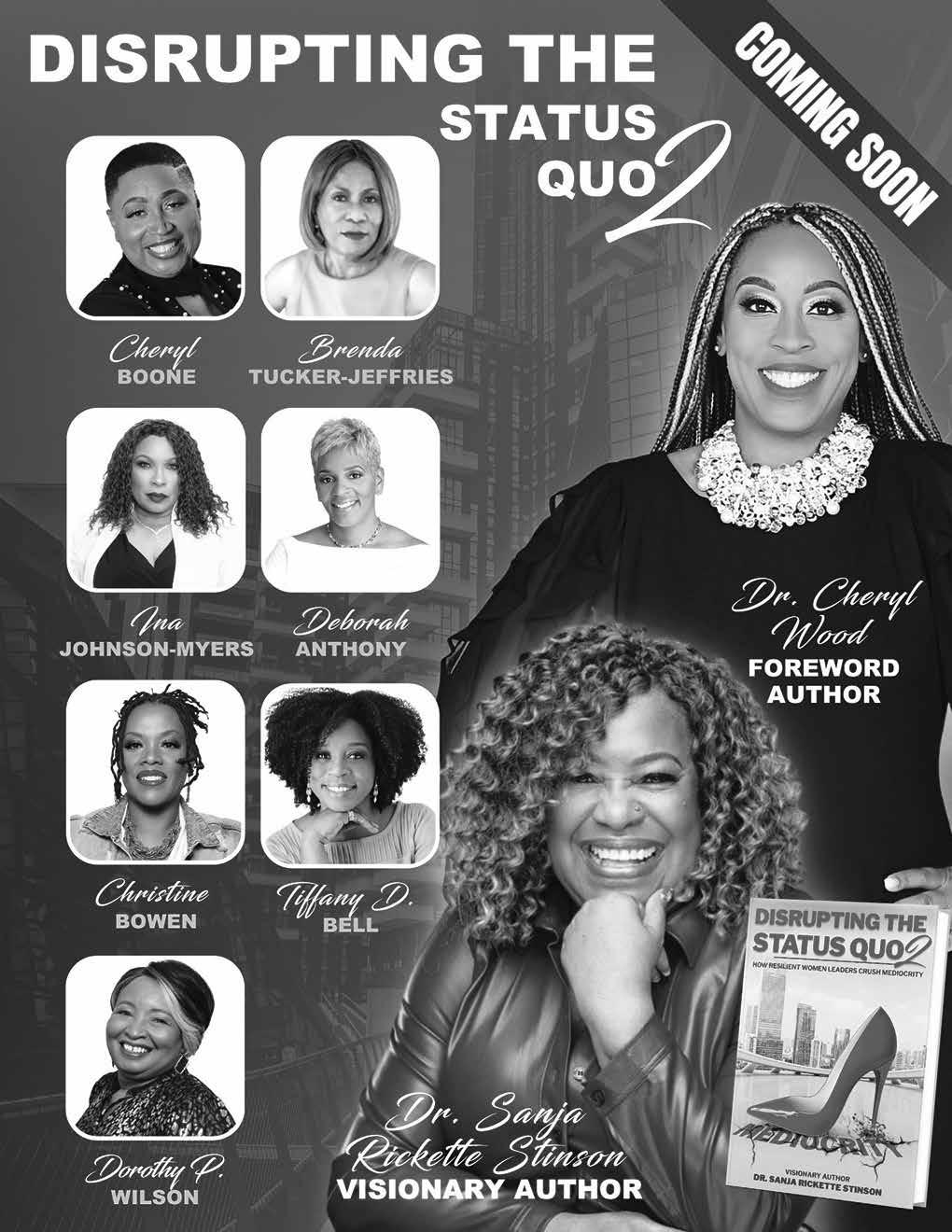
cnw around Town
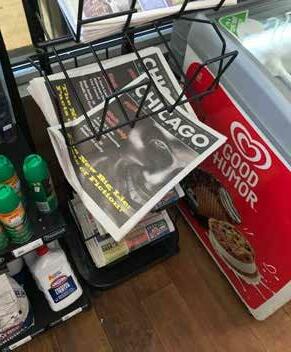
Chicago Treasurer
Conyears-Ervin & BMO’s Financial Empowerment Weekend



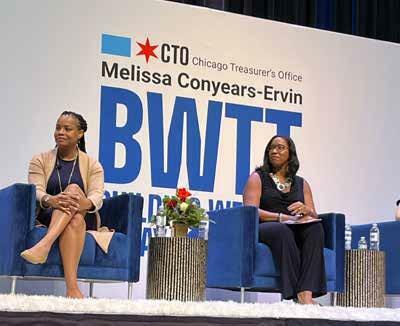
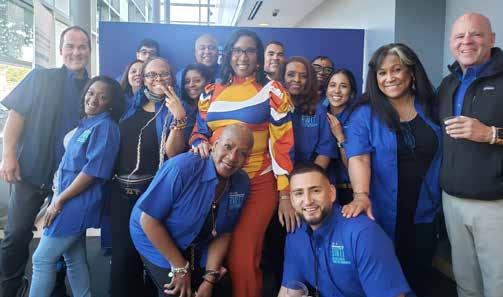 Photos by Eden Wilson
Photos by Eden Wilson
Chicago City Treasurer Melissa Conyears-Ervin and BMO Financial Group will host the “Building Wealth Today for Tomorrow Financial Empowerment Weekend” at the UIC Forum. The event combines the treasurer’s two signature events – the Building Wealth Today for Tomorrow Finan cial Empowerment Summit and the Financial Services Ca reer Fair. The Financial Empowerment Summit featured keynote speakers Daymond John of ABC’s “Shark Tank”, Bill Rancic, the first “The Apprentice” winner, hip-hop mogul MC Lyte, and many more.
House of Dillard

 Photography by Jonathan Stone
Photography by Jonathan Stone
Former renowned Chicagoan Goren Dillard wed Heather Holmes in a beautiful candlelight service at The Madison in Cleveland, OH on September 22, 2022. The service was officiated by Cleveland mayor the Honorable Justin Bibbs, and was attended by family and friends from across the country. Goren is a former advertising and marketing exec utive in Chicago and Washington, DC and is now an execu tive at the Urban League of Greater Cleveland. Congratula tions to Goren and Heather, we wish you all the best!

sEvents NOTEWORTHY ART EXHIBITION SHOWS
the South Side Community art Cen ter (SSCAC) presents ...9 Artists/ 9 Months/ 9 Perspectives on October 7, 2022. 9 Artists/ 9 Months/ 9 Perspec tives features works by the collective, Dandelion Black Women Artists.
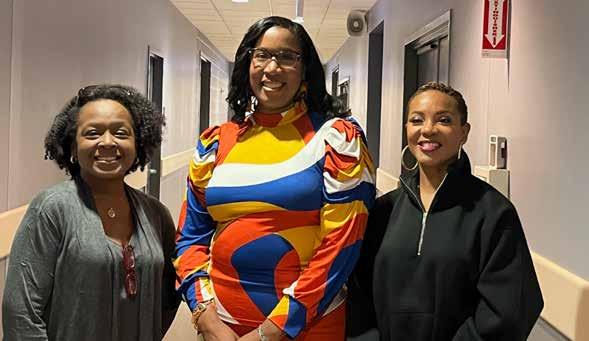
Nine Black women artists engaged in collaborative efforts to create artworks that transcend and transform events in the year 2020. In their eyes, art-making became a transgressive act through ac tivism, documentation and vision. Uti lizing book-making, craft-making and works on paper, 9 Artists/9 Months/ 9 Perspectives presents a birth of vision under hardship felt worldwide, collec tively allowing us to reckon with our own perspectives, reflections and wel fare.
South Side Community Arts Center new exhibition presents the conception, gestation, and birth of collaborative artists’ books created by nine Black women artists of the collective, Dandelion Black Women Artists. Their responses, perspectives, and reflections were inspired by the continuous struggle for health, social, and economic welfare and equity of marginalized people during COVID-19.
Thus, the lack of response from the federal government, and the political allyship of socio-political grassroots movements like Black Lives Matter touches the inner creative expression to be released. Craft-making became a transgressive act through activism, perspective, and vision.
Exhibiting artists include: Adjoa J. Burrowes, Julee Dickerson-Thompson, Aziza Clau dia Gibson-Hunter, Michele Godwin, Francine Haskins, Pamela Harris Lawton, Gloria Patton, Gail Shaw-Clemons, and Kamala Subramanian. 9 Artists/ 9 Months/ 9 Perspectives will be on view from October 8 - December 17, 2022. An opening reception will take place October 7, 5pm - 8pm, with an artist’s talk to follow on Saturday October 8, 1PM - 3PM.

CoNNeCt gallery Features the Work of Arthur Wright October 1 through No vember 12,


From album covers to abstractions of sound, Arthur Wright puts his own undeniable visual beat to all the music her hears, feels and visualizes as visual art His solo show, “Just Like Music,” opened Friday at Connect Gallery located at 1520 East Harper and is On view through November 12th. Gallery hours are 12 pm to 6pm Tuesday through Saturday.

Cannabis
Marijuana THE POLITICAL PLANE
 Mila K. Marshall, PhD Contributing Writer
Mila K. Marshall, PhD Contributing Writer
Cannabis is planted in poli tics and election day is coming fast. With the Illinois industry, having global eyes on the social equity aspect many people are less homed in on municipal cannabis conversations. The decriminalization of can nabis by states doesn’t transfer over into full support of the industry. It’s such a mess that you can have a city council or village decision makers in full support of expungement of marijuana offenses, and social equity benefits of the decriminalization of cannabis but totally against the presence of the industry within their municipalities. This complicated landscape can leave business owners who are banking on bud totally confused. Some business owners have en visioned opening their dispensaries, craft grows or even compliance labs in very specific locations. However, every municipality in the state of Illinois has the freedom to allow the presence of cannabis businesses and can create zoning policies that come into conflict with the business models of those looking to cash in on cannabis. In the Illinois state legislation municipalities are given the right to restrict and prohibit cannabis (see Local Ordinances section). For example, in the city of Chicago there are Restricted cannabis zones. State law allows legal voters to petition for the restriction of canna bis businesses in their precinct, a list of these petitions for restriction can be found on the Clerk’s website.
Approximately 40% of Illinois dispensaries call Cook County home and there are currently 110 dispensaries in the state. How does the Black com munity identify the counties where we have a greater chance of engaging local decision makers, serving our social equity missions and supporting local economies? While Cook County serves as the largest county of Af rican Americans in the nation, around the state of Illinois counties such as Alexander County and Pulaski County, where African Americans make up 33% and 34% respectively can be seen as untapped markets for Cook County investors.
However, despite Cairo, IL being over 70% Black in December of 2021 it was reported that they opted out of allowing cannabis due to the confusion and complexity over legislation, banking and safety issues and fiscal sound ness of allowing this industry… While some may see Cairo as heavy handed or behind the times, this is an important reflective experience for those in the industry to acknowledge there is no solidarity because of the color of our skin. Also, it is not to chastise or shame those decision makers, com munity members and existing non cannabis businesses for being protective and cautious.
What is apparent is there is a concentration of talent, monies and network that contributes to stakeholders’ current positions on cannabis policy. Illi nois has 102 counties and nearly 7 out of 10 Black Illinoisians live in one county. That concentration of resources in the Black community indeed has trickle down effects across the state. How then does information, collabo ration and trust for this volatile industry, travel 373 miles south down 1-57? What is the benefit of cross pollinating across the state to support cannabis as an industry and where would you even begin?
Cities are cautiously approaching protecting their federal funding for ex ample and their municipal brands. A city such as Cairo, IL has its own eco nomic identity and an entrepreneur coming to convince people of a flood of finances without understanding the presence of resources, industries and needs would be a misstep.
Before we present the profits for this volatile industry, first evaluate the opportunities and efforts sustained by a city, acknowledge the existing pro grams and projects and plug in, listen and learn. We don’t have to go as far south as Cairo, IL to practice this approach with Black communities that have not rushed to welcome weed. Decatur, IL in 2019 voted to not allow cannabis sales and revisited the prohibition in 2021 with more City Council support than 2 years prior. Cities such as Decatur are seeking ways to in crease their income.
As a major city with a strong agricultural industry 30% of their population are students. Being sensitive to the population demographics, streamlining social equity benefits to match and engaging in the local politics more as a partner than a profiteer may just work to dissolve cannabis industry ten sions, address intersecting inequity issues and build diverse alliances to tack le the many legacy impacts of the war on drugs across the state of Illinois. Municipal and county politics matter, vote wisely and speak up to the elect ed because everyone isn’t going to be your business’s best bud.
HOT TOpICS
Report Reveals ‘A Hidden Key to Combating Racial and Ethnic Disparities in Juvenile Justice’
NNPA
NNPA NEWSWIRE — The in-depth analysis of the juvenile justice system’s un equal and limited use of diversion from court involvement, particularly for Black youth, found that in 2019, 52% of delinquency cases involving white youth were han dled informally (diverted), far higher than the share of cases diverted involving Black youth (40%).By Stacy M. Brown, NNPA Newswire Senior National Correspondent @StacyBrownMedia


According to new Sentencing Project research, diverting youth from juvenile court involvement
should be a cen tral focus in re ducing racial and ethnic disparities.
It also should improve out comes in Ameri ca’s youth justice systems.
The report’s au thor wrote that getting arrested in adolescence or having a delin quency case filed in juvenile court clearly damages young people’s futures and increases their subsequent involvement in the justice sys tem.
“Compared with youth who are diverted, youth who are arrested and formally peti tioned in court have a far higher likelihood of subsequent arrests and school failure,” wrote Richard A Mendel, Senior Research Fellow and Youth Justice at the Sentencing Project.
“Pre-arrest and pre-court diversion can avert these bad outcomes,” Mendel con cluded.
According to Mendel’s research, Black youth are far more likely to be arrested than their white peers and far less likely to be diverted from court following arrest. Other youth of color – including Latinx youth, Tribal youth, and Asian/Pacific Is lander youth – are also less likely than their white peers to be diverted.
“The lack of diversion opportunities for youth of color is pivotal because the great er likelihood of formal processing in court means that youth of color accumulate longer court histories, leading to harsher consequences for any subsequent arrest,” Mendel asserted.
“Expanding diversion opportunities for youth of color, therefore, represents a cru cial, untapped opportunity to address continuing disproportionality in juvenile jus tice,” he noted.
The in-depth analysis of the juvenile justice system’s unequal and limited use of diversion from court involvement, particularly for Black youth, found that in 2019, 52% of delinquency cases involving white youth were handled informally (diverted), far higher than the share of cases diverted involving Black youth (40%).
The report found the glaring disparity between Black and white youth in every major offense category.
“Overwhelming research finds that diverting youth from the court system yields better outcomes for young people’s futures and public safety,” Mendel insisted. “Yet diversion remains sorely underutilized, especially for youth of color, and un equal treatment in diversion is a key driver for even larger disparities in confinement later in the process.”
Released on Aug. 30, the report, “Diversion: A Hidden Key to Combating Racial and Ethnic Disparities in Juvenile Justice,” examined decades of research showing how educational, career and public safety outcomes are better for youth diverted away from juvenile courts.
It provided a primer on diversion and its impact on racial equity – specifically, the
Health sickle Cell Disease treatment Centers Act of 2022
Sharice Bradford Staff WriterSickle Cell Disease remains constant even though Sickle Cell Awareness Month this year ended September 30. A major sickle cell disease accomplishment, a hopeful vic tory is on the horizon. On September 15, 2022, Senators Chris Van Hollen (NJ), Sen ator Cory Booker (NJ), Congresswoman Barbara Lee(CA), and Congressman Danny Davis (IL) came together to introduce the Sickle Cell Disease Treatment Centers Act of 2022. This Act seeks to grow the num ber of comprehensive treatment centers for patients with Sickle Cell Disease (SCD) while additionally providing patients with the opportunity to find treatment centers in their area.
The Sickle Cell Disease Treatment Cen ters Act (Act), was created to establish a network of care for Sickle Cell Patients and in addition create a framework for treat ment and delivery for patients with Sickle Cell Disease. The Act seeks to provide federal grant funding totaling $535 million for hospitals that are currently providing treatment to Sickle Cell patients and to expand federal funding to address the na tional deficit of treatment centers currently available to patients. The coordinating center would work in conjunction with the Centers for Disease Control (CDC), and additional partners would be the National Sickle Cell Disease Treatment Center Pro gram at the Health Resources and Services Administration (HRSA).
The purpose of this collaboration will be to collect and monitor data as well as pro vide educational materials and disseminate best practices to medical centers nation wide. The Act also seeks to enhance care delivery, and provide tools that provide education, coping and increase knowledge not only for patients, but for families and caregivers as well.
Sickle Cell anemia is one of a group of inherited disorders known as Sickle Cell Disease. Sickle Cell disease affects the body’s red blood cells causing the blood cells to become sickled shaped, thus the origin of the name of the disease. The sickled shape of the blood cells inhibits proper blood flow throughout the body causing the common symptoms of Sickle cell disease such as pain episodes and in some cases stroke. Currently, there is no cure for Sickle Cell Disease, however, with proper treatment and management of the disease many patients live long, productive lives.
Sickle Cell disease is most commonly found in people of sub-Saharan Africa, but is also found in people of Hispanic, South Asian, Middle Eastern and Southern Euro pean lineage. Currently there are approxi mately 100,000 people in the United States
living with Sickle Cell Disease, 52,000 people in Europe live with Sickle Cell Dis ease, and millions of others throughout the world live with SCD and Sickle Cell Trait.
The Sickle Cell Disease Treatment Cen ters Act proposes an appropriation of $535 million for fiscal year 2023 and a recurring appropriation. The funding will be divided into three primary areas: Support of a spoke and hub network, which will account for 70% of the funding; community based Sickle Cell Disease organizations and nonprofits will receive 20% of funding and the remaining funding will be earmarked for the National Coordinating Center and CDC outreach campaigns. If passed, the Act will provide funding for over 128 treat ment centers and 100 community based organizations or nonprofits.
Congressman Danny Davis stated, “..it is a disease that disproportionately impacts the lives of African Americans more so than that of any other ethnic group in the United States. Better treatments and out comes for patient’s affected by Sickle Cell Disease do not happen by chance. Rather, it comes as a product of the hard work and sacrifice by countless individuals across this great nation. Every day, progress is being made toward the advancement of more effective forms of medical care…. I remain committed to championing the fight for quality, healthcare that provides a cure for Sickle Cell Warriors and their families.”
Though the disease is over 100 years old, many physicians and care providers still struggle with treating patients with Sickle Cell disease. The ability to have medical professionals with extensive knowledge of the disease pathology and treatment can lit erally be a life saving advancement for sick le cell patients and the road to a cure. The passage of this Act can be a life changing measure in the future care and treatment of patients with Sickle Cell Disease.
References:
https://www.global newswire.com/news-re lease/2022/09/15/2517333/37049/en/
GBT-Supports-the-Sickle-Cell-DiseaseTreatment-Centers-Acr-of-2022.html https://www.vanhollen.senate.gov/news/ press-releases/van-hollen-booker-lee-davisintroduce-bill-to-improve-access-to-carefor-americans-with-sickle-cell-disease https://www.vanhollen.senate.gov/imo/ media/doc/Sickle%20Cell%Disease%20 Treatment%20Center%20Act%20Bill%20 Text.pdf
Continued from p15report revealed that:
• Compared to youth formally involved in court, youth diverted from court have a far lower likelihood of subsequent arrest.
Jackson Park Drivers...Plan Ahead, Don’t Let New Traffic Pattern Slow
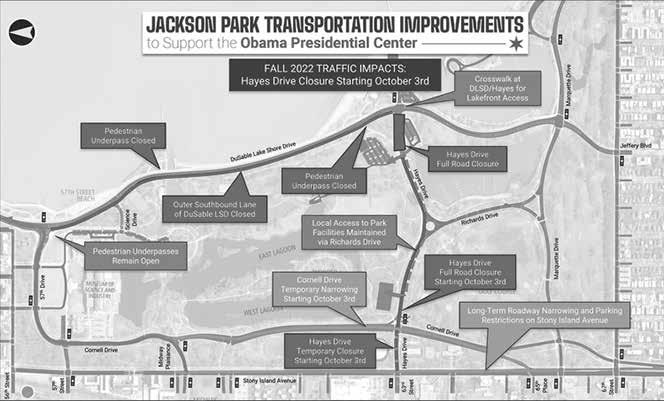
•
They also are far less likely to be incarcerated, commit less violence, have higher school completion rates and college enrollment, and earn higher incomes in adulthood.
Mendel found that disparities in diversion result both from subjective biases against youth and families of color and from seemingly neutral diversion rules and practices that cause disproportionate harm to youth of color either by unnecessarily limiting el igibility for diversion or by making it difficult for youth of color to complete diversion successfully.
Many states and localities have recently adopted new strategies to expand and improve diversion, many of which show substantial promise, Mendel further discovered.
“However, efforts to expand diversion opportunities to date have most often lacked an explicit and determined focus on reducing racial and ethnic disparities – an essential ingredient for success,” he added.
In his conclusion, Mendel said the evidence leaves no doubt that the justice system “is toxic for youth and should be employed only in cases when young people pose a serious and imminent threat to the safety and well-being of others.”
“For most young people, diversion yields better public safety and youth development outcomes than formal processing in juvenile court – and for much less money,” he wrote. However, youth of color are not being offered diversion in the same numbers as white youth.
“Racial and ethnic disparities at diversion play a significant role in propelling sys tem-wide disparities and represent a key reason why efforts to improve equity in juvenile justice have achieved so little progress to date,” Mendel added.
For all these reasons, the diversion stage of the juvenile court process should be a top priority for youth justice reform, he stated.
“Advocates should push for, and system leaders should take aggressive action to ad dress the disparities highlighted in this report,” Mendel wrote.
“Combined, the reforms recommended here to expand the use of diversion and to enhance supportive community-led programming for diverted youth offer perhaps the most important and promising avenue currently available to reduce disparities and to improve youth justice systems nationwide.”

You Down Jacksonparkimprovements.org
Please note the following upcoming traffic changes: Starting on or after October 3rd and lasting approximately three weeks, a temporary configuration will go into place to allow for advance work in preparation for construction of two new pedestrian underpasses at the reconfigured in tersection of Hayes Drive and Cornell Drive: Hayes Drive between Stony Island Avenue and Cornell Drive will be tem porarily closed.
Temporary lane reduc tions will go into place on Cornell Drive to the north and south of the Hayes Drive intersection.
During peak rush peri ods, two lanes of traffic will be maintained in the peak direction. During off-peak periods, one lane will be provided in each direction.
For drivers intending to reach northbound DuSable Lake Shore Drive via Hayes Drive to Cornell Drive to 57th Drive, a signed detour will be in place to direct drivers to DLSD via Stony Island Avenue to Midway Plaisance to Cornell Drive to 57th Drive.

A long-term closure of Hayes Drive east of Cornell Drive will also go into place on October 3rd. Local access to Park District facilities will be maintained via Richards Drive.
Drivers are urged to pay close attention to flaggers and construction signage when entering and driving through work zones, obey the posted speed limits, and be on the alert for workers and equipment.
Fashion
Panache
By Sterling Capricio Fashion EditorWhenit comes to fashion, there are a lot of great designers out there. So, CNW will focus on the fashion designers who are making waves in the industry. From established names like Duro Olowu to emerging talents like Telfar Clemens and Priya Ahluwalia, these designers are creating looks that are both stylish and unique. If, you’re a fashionista looking for some new inspiration, be sure to check out our list of the top fashion designers you should familiarize yourself with.
Designers of color have made their mark in the fashion industry for decades, often fighting for visibility and recog nition. While the mainstream fashion industry is gradually becoming more inclusive, there is still a long way to go. As we enter the fall and fast approaching winter, we wanted to shine a light on some of the fashion designers who have made an impact on the industry. From iconic trailblazers like Willi Smith and Patrick Kelly to modern greats like the late Virgil Abloh and the aforementioned Telfar Clemens, these are the fashion designers you should know.
What is fashion design?
Fashion design is a broad term that can be used to describe the work of any fashion designer who is African

American or of African descent. Fashion designers have been involved in the fashion industry for centuries, but their contribu tions have often been deleted or under valued. Designers like Brandon Maxwell, LaQuan Smith, and Pyer Moss are helping to redefine what it means to be a Back fashion designer. By creating collections that celebrate the diversity of culture and featuring models of all shapes and sizes, these designers are changing the landscape of the fashion industry. What was once a white male -dominated industry is now beginning to reflect the true diversity of the world we live in.
Meet the Fashion Designers Shifting the Trend The fashion industry has often overlooked designers in favor of their white counterparts. However, there are many talented and influential fashion designers who have made their mark on the industry. Gucci’s first artistic director, Donyale Luna; and Louis Vuitton’s first artistic director, the late Virgil Abloh and . These designers have helped to shape the fashion industry and have been instrumental in making it more inclusive. We must include Vogue’s André Leon Talley, who opened doors for these designers to be seen and acknowledged. In recent years, there has been a push for more diversity in the fashion industry. This has led to more opportunities for designers to showcase their talent such as Duro Olowu: This London-based designer is known for his vibrant and colorful prints. His collections have been worn by everyone from Michelle Obama to Oprah Winfrey. Also, Olivier Rousteing the creative direc tor of Balmain, another iconic fashion house. He took over the reins in 2011 at just 25 years old, becoming one of the youngest ever to lead a major fashion label. Under Roust
eing’s direction, Balmain has become even more popular with A-listers and fashionistas, thanks to his sexy and stylish designs. Chicago’s late, great Virgil Abloh was one of the most exciting young designers in the industry today. As the founder of his street wear label Off-White, in 2018 he was named artistic director of menswear at Vuitton, making him one of the few designers to ever lead a major luxury fashion house. Grace Wales Bonner, the Central Saint Mar tins graduated who started her men’s line, Wales Bonner, in 2014, is only in her late 20s, but she’s firmly established herself as a designer whose collections explore ness Euro-style. New Age designers such as Christopher John Rogers, Sergio Hudson, Priya Ahluwalia of Indian-Nigerian descent and South African, Thebe Magugu are forging new paths that April Walker, Traci Reese, and B Michael forged previously.
African American fashion designers have certainly made their mark both on the runway and in the pages of popular magazines. From edgy streetwear to high-end couture, these talented men and women have helped to shape the fashion industry in a truly unique way. While some fashion designers have been household names for decades, others are relatively newcomers to the scene. But one thing is certain - they are all making a major impact on the world of fashion.
From pioneers like Ann Lowe and Patrick Kelly to mod ern-day icons like Dapper Dan and Kerby Jean-Raymond, these designers have made a lasting impact on the fashion industry. While their styles may be different, they all share a passion for fashion and a commitment to celebrating culture through their designs.
Photog @Ahluwalia AW2022 ~~ahluwalia.world
Food &Wine
TRYING SOMETHING
Mare’ Evans Contributing WriterTODAy we live in a fast food’s world. And everybody is worse off for it. Our meals are no longer prepared or cooked with love and loaded with preservatives that our bodies reflect because they have no health value. Oh, I get that we’re all so busy running from one responsibility to another. But there are a lot of folks who are not. For those who can, remember when your mother or grandmother cooked dinner every day and dinner was served at a particular time? You or one of your siblings was charged with setting the table. At dinner, you all set around the table and discussed the day. That’s what family dinners used to look like. Life has changed as have many of the daily staples that helped to keep our humanity in check. Healthy meals were one on those staples. So today you’ve got to find ways to capture the same essence to provide your family with love and nutrition, while utilizing your time smartly. So, when was the last time you used
New
your slow cooker? Its fall and you have no excuse about it being too hot for this or that. So, pull it out. Check your cabinet for the ingredients and buy the rest. Check off your list.
Now, it’s time to get with it. Follow the instructions below. And enjoy dinner.
This one is a fun recipe giving you that sense of a burger in case you’re having a fast foods withdrawal. It’s a perfect easy, filling weeknight dinner. Made in the slow cooker with only a few ingredi ents, it’s low in fat, packed with protein, and paleo based.
INGREDIENTS
• 1 medium onion, finely chopped
• 1 teaspoon dried oregano

• 2 dried bay leaves
• 1 chipotle in adobo sauce, minced, plus 1 tablespoon adobo (you can use a barbecue sauce if you prefer)
• 1 can (28 ounces) crushed tomatoes
• 1 can (14.5 ounces) whole tomatoes in puree
• 2 teaspoons coarse salt
• 1/2 teaspoon freshly ground pepper
• 2 3/4 pounds boneless pork shoulder, trimmed and halved crosswise
1.
• 8 sandwich rolls, split, for serving
• Coleslaw, for serving
• Pickles, for serving
COOKING DIRECTIONS
o Step 1
In a 5- to 6-quart slow cooker, combine onion, oregano, bay leaves, chipotle, adobo sauce, tomatoes (and puree), salt, and pepper. Add pork and turn to coat completely.
Advertisement
o Step 2
Cover and cook on high until meat is pull-apart tender, about 6 hours. Trans fer pork to a bowl; shred with two forks.
Return pork to pot and toss with sauce. Discard bay leaves.
o Step 3
Serve pulled pork with rolls, coleslaw, and pickles, or broccoli and pan fried, roasted or baked potatoes.
*A paleo diet is a dietary plan based on foods similar to what might have been eaten during the Paleolithic era, which dates from approximately 2.5 million to 10,000 years ago.

Looking for Something Good to Eat? Try Daisy’s po’ boy & Tavern
Looking for something good to eat tonight?
Try out this fantastic Black owned restaurant for that just right thing! Let them know that Chicago News Weekly sent you!


CULINARy FOOD HUB BREAKS GROUND IN ENGLEWOOD
CNW Reports
Daisy’s Po’boy and Tavern Hyde Park
Daisy’s Po’boy and Tavern is an UpSouth po’boy shop that evokes the vibrancy of New Orleans through its most celebrated and classic sandwich, fun colors, and music. During the weekdays and some nights, Daisy’s will host an array of Chicago’s die-hard sports fans featuring sports on nine televisions screens. During off-season evenings, you may find people enjoy ing the menu to the tunes of a local brass band or the sounds of Louisiana being piped in (pun intended).
Daisy’s is affectionately named after Chef Erick Wil liams’ late aunt Daisy who married his uncle Stew, a man with Louisiana roots and a passion for good food. Daisy and Stew shared 49 years of marital bliss and forever changed the way that Williams would see Cajun and Creole meals. Though the Great Migration
has changed the way some of these meals are pro duced in the North, the love with which our po’boys are prepared is consistent with the love in the place of their origin. Erick’s late aunt Daisy is remembered as kind, no nonsense and always prepared to have a great time. We hope that as we pay tribute to a life well lived that you take part in our casual approach to fun, food, and laughter.

Daisy’s Po’boy and Tavern
5215 South Harper Avenue, Chicago, Illinois 773-675-8767
www.daisyspoboychicago.com
Tuesday-Thursday 4 pm - 9 pm
Friday-Saturday 4 pm 10 pm

Mayor Lori E. Lightfoot joined Englewood community members last week to break ground on Englewood Con nect, a $13.9 million culinary food hub that’s restoring the landmark Engine Co. 84 firehouse as a commercial kitchen and event space in the heart of the neighborhood.
“I am thrilled to break ground on our city’s latest INVEST South/West project,” said Mayor Lightfoot. “Englewood Connect and the many other investments we are making in our communities will ensure that Englewood residents have abundant opportunities to live, work, and play in their neighborhood.”
The McLaurin Development Partners and Farpoint De velopment project at 6204 S. Green St. is repurposing the Tudor-style fire house, built in 1929, as a 9,000-square-foot culinary center and business incubator that’s expected to employ more than 45 people. A landscaped public plaza adjacent to the building will host special events and other neighborhood activities.
City support for the project includes $6 million in Tax In crement Financing assistance and the sale of the firehouse and nearly two acres of City land, valued at $417,000, for $1.
“This project is creating a new community anchor in the heart of Englewood, showcasing the landmark firehouse and the talented culinary professionals that will leverage its new role within the city’s thriving food-related economy,” Department of Planning and Development Commissioner Maurice Cox said.
Englewood Connect is part of the ongoing redevelopment of vacant City land on the northwest corner of Halsted and 63rd streets. In March 2021, the project was selected from four private development proposals submitted in response to an INVEST South/West RFP issued by DPD. In addition to activating the former firehouse and vacant
land with community-oriented goals, the project will create food-related synergies with the Washburn Culinary and Hospitality Institute at nearby Kennedy-King College, multiple urban farms within Englewood’s nearby urban ag riculture district, and nearby retail amenities at Englewood Square, a 48,000-square-foot shopping center that repur posed vacant City land in 2016.
“Our development platform is built with a laser focus on community vitality, identifying and helping local businesses grow while leveraging strategic partnerships with large in stitutions,” McLaurin Development founder Zeb McLaurin said. “INVEST South/West is the perfect toolbox to corral resources and implement a sustainable economic develop ment approach across all of Chicago’s neighborhoods.”
The project includes architecture and design services by SOM and TnS Studios. During construction, the site will feature fencing with artwork by South Side artist Isiah “ThoughtPoet” Veney, supported by the Department of Cultural Affairs and Special Events’ INVEST South/West programming.

INVEST South/West is an urban revitalization strategy being implemented by Mayor Lightfoot that is leveraging nearly $2 billion in public and private investment commit ments within 10 West and South side community areas. En glewood Connect joins a growing list of INVEST South/ West projects across those 10 community areas that are under construction or completed, including Auburn Gresh am Apartments, the Healthy Lifestyle Hub, 4400 Grove, 43 Green Phase I, Ogden Commons, and more.
Other Englewood INVEST South/West projects include the Thrive Englewood mixed-use housing project at 914 W. 63rd St., the E.G. Woode business incubator at 1122 W. 63rd St., the Go Green Community Fresh Market at 63rd and Racine Avenue, and a CDOT led streetscape along the 63rd/Halsted corridor.
SHERYL LEE RALPH: An Original Dreamgirl Living Her Dreams
At the Movies
It was the speech heard literally around the world.
When Sheryl Lee Ralph accepted the award for Best Supporting Actress in a Comedy Series at the 74th Emmy Awards, she set the Twitter-verse and whole universe on fire. Her win makes her only the second Black actor to win in the category since Jackée won in 1987 for “227.”
As she held up her Emmy, she said, “To any one who has ever, ever, had a dream and thought your dream wasn’t, wouldn’t, couldn’t come true, I am here to tell you that this is what believing looks like, this is what striving looks like and don’t you ever, ever, give up on you.”
Ralph plays Barbara Howard in “Abbott Ele mentary,” the critically acclaimed mockumenta ry-style comedy series by Quinta Brunson, who won her own Emmy for Outstanding Writing for a Comedy Series.
What made Ralph’s speech so compelling is that she began it by singing one of her favorite songs, “Endangered Species,” by Dianne Reeves. She belted: “I am an endangered species, but I sing no victim’s song. I am a woman, I am an art ist, and I know where my voice belongs.”
Ralph’s Rein
Sleep With Anger,” “Ray Donovan, “Claws,” and “Criminal Minds.” She is fondly remembered for playing Brandy’s step mother on “Moesha.”
more, the vitriol railed against the homosexual community. She pulled her diva friends togeth er and created “Divas Simply Singing,” an an nual fundraiser still going strong 30 years later. The production is now televised on ABC.
Her love of Politics
She has appeared in interviews many times with her husband Pennsylvania State Senator Vincent Hughes to discuss politics and the im portance of voting.
“I love politics so much I’m sleeping with it,” she often quips.
Last November, while on “The Sunday Show with Jonathan Capehart,” she said, “The power of the vote is one of the most ignored powers by the people.
“In the big election, you vote for the presi dent. But when it comes to the midterms, you vote for yourself and your community. The big election is about yourself and your country. The midterms is about yourself and your com munity,” she said.
“You need better schools for your kids, please vote. You need hospitals, please vote. You need parks for yourself and your dogs, please vote. You need clean water, please vote.”
That Confidence
In a Harper’s Bazaar interview earlier this year, Ralph spoke about the importance of confidence.
SIDNEY
I
had the pleasure of attending a screening of Oprah & Reginald Hudlin’s revealing docu mentary honoring the life of iconic Bahamian American actor, filmmaker and activist, Sid ney Poitier. Simply titled, SIDNEY, took the audience on a revelatory journey through his life from humble beginnings growing up on Cat Island, Bahamas to becoming one of the world’s most celebrated performing artists. The most phe nomenal thing about this film is that Sidney Poitier is in it, telling his own story as only he could.
From the film’s start we hear his rich, silky voice saying, “I left the Bahamas with a sense of myself. And from the time I got off the boat, America began to say to me, you’re not who you think you are.”
Born two months premature in 1927, the youngest of sev en during a business trip his parents took to Miami, for their tomato farm business. Sidney was not expected to live. Upon hearing the doctor’s news of his son’s impending demise, Reginald Poitier went out and got a shoe box for his burial. But Sidney Poitier proved the doctor wrong and lived. Man . did he live! He changed the world just by being true to himself. Although Sidney spent the first 15 years of his life in the Bahamas, his birth in Miami gave him dual citizenship. His boyhood shaped the man he became, an unapologetic human being who happened to be born Black. As a youth
experiencing life on Cat Island, he lived in a community where everyone looked like him. He had no concept of race and in his words, “I never thought about what I looked like, I didn’t know what a mirror was.”
His move to the U.S. in 1942 would change that. He quickly got into trouble when his job sent him to deliver a pack age. Because he had no reference, regarding race relations in America, he went to the front as is customary. When the white woman opened the front door, she scolded him in an elevated voice and told him to go to the back and slammed the front door in his face. He didn’t grasp the context of her instruction and, placed the package down at the front door and left. When he returned home, he found his family in the dark on the floor hiding from the Klan, another thing he had no knowledge of, and they asked him “What did you do today?”
Shortly after that incident, Sidney moved to New York, where he discovered his passion for acting despite his ini tial rejection by the American Negro Theatre because he could not read. It was there he would meet the man who would become his lifelong best friend, Harry Belafonte. Sid ney and Harry performed together, competed against each other, and fought in the Civil Rights Movement together. The two friends almost died together on a trip to Mississippi when the Klan attempted to kill them as they transported $70,000 in support of the Freedom Summer campaign in
which white and Black students were waging a war against voter suppression. The attempt on their lives took place 4 months after he won the Academy Award for the film, Lilies of the Field. We see and hear from his wives, Juanita, and Johanna, all his daughters and a host of colleagues. We learn that Juanita convinced him to accept the offer, (a movie role first offered to Harry Belafonte). Sidney did not want to do it. One, they did not have any money. So, Juanita suggested that he negotiate for ownership. He took her advice, and the rest is history.
We also hear about his affair with Diane Carroll from her own lips and the reason it ended.
Poitier was the father of six daughters from two mar riages. He shared four daughters—Beverly, Pamela, Sherri and Gina—with his first wife, Juanita Hardy, whom he was married to from 1950 to 1965. In the film Sidney speaks about his last wife, Johanna Shimkus as the love of his life with whom he had two daughters and in accordance with his father’s philosophy, “The true measure of a man is how well he provides for his children,” he made sure that all his daughters were in relationship with each other.
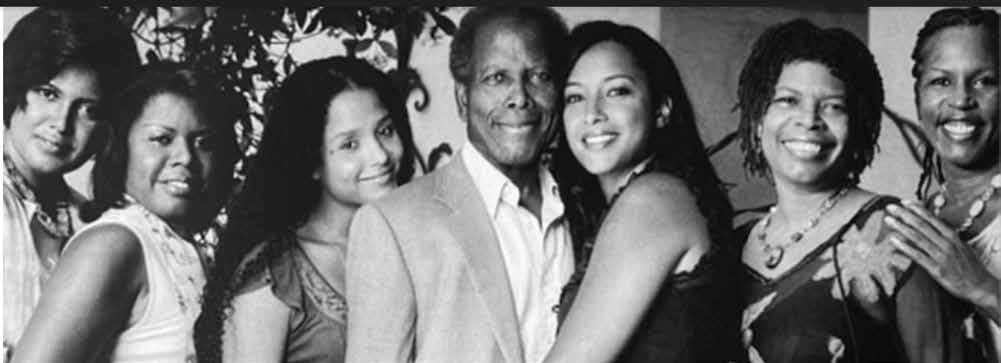
SIDNEY features candid commentary from Denzel Wash ington, Morgan Freeman, Halle Berry, Spike Lee, Barbra Streisand, Lenny Kravitz, Robert Redford, Quincy Jones, Lou Gossett Jr., Lulu, Katherine Houghton and producer, Oprah Winfrey and director, Reginald Hudlin. Spike Lee shares that it is, Sidney, who made it possible for Black people to have careers behind the cameras. Barbra Streisand shared that she and Paul Newman formed a pro duction company with Sidney.
I have always felt this line from Guess Who’s Coming to Dinner summed up the measure of this man....” You think of yourself as a colored man, I think of myself as a man.”
This documentary confirms the truth in this perception.
SIDNEY is streaming on Apple+ TV. See It!
She returned to the Broadway Stage in “Thoroughly Mod ern Millie,” and “Wicked,” and in 2021 became a Broadway producer with “Thoughts of a Colored Man.”
Ralph’s career has been a long and illustrious one. The late, great, Oscar Award-winning Sidney Poitier, a mentor, gave her her first acting job in Hollywood at age 19 on his film “A Piece of the Action.” Not a bad beginning.

She then found fame as the dazzling Deena Jones in the Broadway musical “Dreamgirls,” for which Ralph was nom inated for Tony and Drama Desk awards.
She appeared on the big and small screens for the next several decades racking up more than 100 credits includ ing “The Mistress,” Sister Act 2: Back in the Habit,” “To
Despite all, performing is only one of her passions.
“I love myself. I love me. I am in a business that is full of the most enormous amount of rejection that you can ever contemplate. I have been too tall, too short, too Black and not Black enough all in one day. … You have gotta believe … especially believe in yourself.
Her Diva Foundation
In 1990, long before it was popular for celebrities to rou tinely fight causes, Ralph began fighting a very controversial one. She founded her Diva Foundation to fight the devasta tion of HIV and AIDS. She saw it firsthand as she loss many of her friends and colleagues to the disease.
She hated the stigma that came with the virus and, even
“I wake up every morning and look in the mirror and I say ‘Hello, Darling! Look at you, you made it through another day, My Dear. Yes, you did, and you look good, too. Yeah, you woke up like that.’”
That is why four decades later, Sheryl Lee Ralph still daz zles.

Arts & Culture
